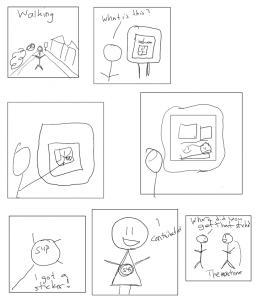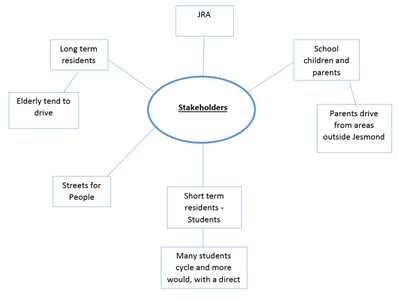Hello again,
This week we met with our client Tony, who reached out to us wanting an update on the project. We caught him up on our progress and gave him a rundown of our prototype, which was not completely ready for testing. He was very understanding of this and we felt like his input will help us improve our prototype even more for our next round of user testing with Ali, Ed and Sean. We would be testing their interaction with the user interface and ease of use, we’d only require devices such as an Ipad, a stable internet connection and a means of collecting data. One of the more important feedback inputs we got from Tony was that we should ask the user of our product to identify their age range and preferred mode of transport, this is because age and transportation will influence their responses.
We recorded notes on where Tony struggled to progress through our rough invision prototype and identified flaws with macro links. In addition, Tony didn’t properly read the text meaning he was unaware of the reward stickers and the progress bar, vital to incentivising our target audience. Henceforth, we plan to develop the design making the reward more obvious and include other improvements that attribute to the ease of use, such as zooming into the map so the user can see the proposed changes more clearly. We also discuss about implementing pop-up tips to make it clearer for our user. Our colour palette was very tertiary at first but we added bold pinks and blues to make the content more appealing and easier to read. Our ideal participants would be the younger demographic but are not exclusive to them, however it would be heavily influenced on the locations we would propose.
We also plan on asking Ali what the long term use of our project could be and if/how it may benefit them, if there is something we could include. We’ve decided to allocate ourselves roles where we’d split up into teams of two, one would interact with either Ali or Ed and the other record their progress. We also plan on conducting our prototype demos indoors in order to avoid any disruptions such as noise or bad weather. We plan on not providing them much help unless needed, and not give away too much information immediately as they wouldn’t be using it blind as our audience would.


